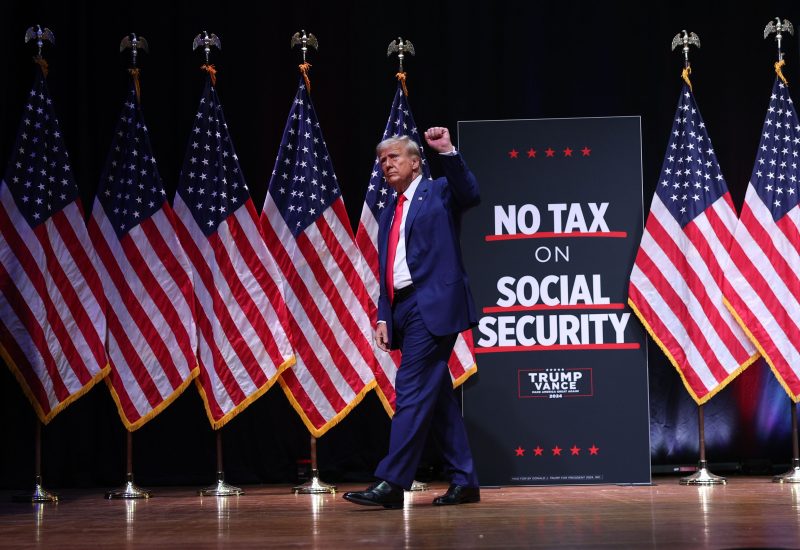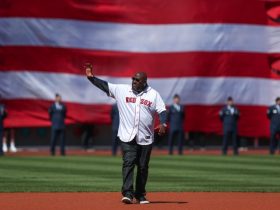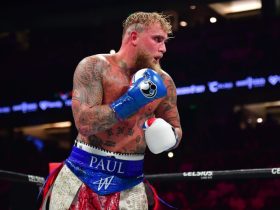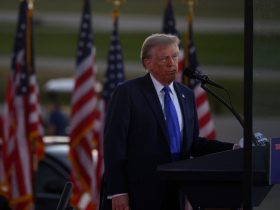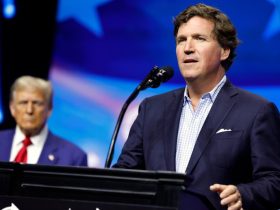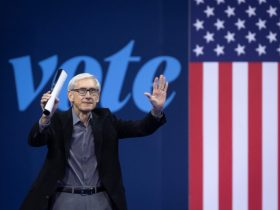Former president Donald Trump on Wednesday appeared to open the door to significantly expanding his plans to impose sweeping new tariffs if he returns to office, suggesting an escalation in proposals that many experts already see as likely to cause a global trade war.
Previously, the Republican presidential nominee had called for levying tariffs of 10 percent on all U.S. trading partners, aiming to create a “ring around the collar” of the national economy. But during remarks on the economy in Asheville, N.C., Trump for the first time floated tariffs of between “10 and 20 percent” on imports to the United States.
The Trump campaign sought to play down the significance of the comment and said the former president did not specify that the 20 percent tariff would apply to all nations. Still, the new figure represented an intensification of Trump’s trade proposals, which have already alarmed some Republican donors wary of disrupting the global trade order and have faced heavy criticism from Democratic lawmakers.
“We’re going to have 10 to 20 percent tariffs on foreign countries that have been ripping us off for years,” Trump said Wednesday. “We’re going to charge them 10 to 20 percent to come in and take advantage of our country.”
His comments on trade came as part of a speech designed to focus on the economy that stretched more than an hour. He attempted to hammer his Democratic opponent, Vice President Kamala Harris, as polls suggest she is gaining ground in the race. Trump reprised his calls for eliminating taxes on tips and Social Security, said he would lower energy costs, and also exaggerated the extent of inflation and spending under the Biden administration.
The tariff remark could draw renewed attention to the former president’s economic plans and his first-term approach to global trade. A 10 percent universal tariff, coupled with a tariff of as much as 60 percent on China that Trump has also eyed, would cost a typical middle-income household roughly $1,700 per year, according to the Peterson Institute for International Economics, a pro-trade Washington-based think tank. Doubling that would increase its costs to U.S. households, while probably doing more to shield domestic producers from foreign competition.
“It has been 10 percent universal across the board — 20 percent would be a doubling of that, and all analyses have already shown that would be detrimental to the economy,” said Erica York, an analyst at the Tax Foundation, a conservative-leaning think tank. “It’s an escalation of what would already be an escalation from his first term.”
Doug Holtz-Eakin, president of the American Action Forum, a center-right think tank, said: “He has clearly floated the 10 percent, and if he’s now saying ‘10 to 20 percent’ you can assume the baseline is the same — that seems like a reasonable conclusion to me.”
Holtz-Eakin said many business leaders are concerned with the seemingly erratic nature of Trump’s policy process. “If you go to 10 to 20 percent in North Carolina, who is to say you won’t go to 40 percent in Wisconsin?” he added.
Trump’s speech on the economy came two days before Harris is set to roll out her own economic plan in Raleigh, N.C. After Harris said this past weekend that she also supported no taxes on tips, Trump accused her of copying his ideas.
“When Kamala lays out her fake economic plan this week, [it] probably will be a copy of my plan because basically that’s what she does,” he said.
Trump’s running mate, Sen. JD Vance (R-Ohio), leaned into a similar argument Wednesday, criticizing the Harris campaign as “a fake platform that offers no specifics about how to do the people’s businesses and a fake promise to change the government.” (Harris’s running mate, Minnesota Gov. Tim Walz, has committed to an Oct. 1 vice-presidential debate with CBS. Vance has yet to commit.)
Although Trump’s Wednesday speech was billed as focusing on the economy, he frequently veered into other topics and lobbed personal attacks at his rival. He claimed — without evidence — that President Joe Biden was a “very angry man” because he is no longer the Democratic nominee for president and suggested: “He’s going to put you in World War III.” He also attacked Harris as the “border czar,” a frequent Republican attack line. (Though Biden asked Harris to negotiate with Central American countries to help address the root causes of migration, he never put her in charge of border policy.)
Trump also mocked Harris’s laugh, calling it “the laugh of a person with some big problems.” He also repeatedly mispronounced her first name — a move that critics called an attempt to other-ize her — and commented on a recent Time magazine cover story about Harris. (“I want to use that artist, I want to find that artist, I like him very much,” he said.) He spoke in apocalyptic terms as he described what would happen if Harris wins the White House, predicting “a 1929 style depression.”
Trump’s and Harris’s decision to talk about the economy in North Carolina highlights the broader importance of the state in this year’s election. A Democrat has not won North Carolina in a presidential race since 2008, but the party is showing interest in competing there this cycle. The Washington Post’s polling average has Trump leading Harris by three percentage points in the state. Biden was trailing Trump by five points before he dropped out.
Asheville, where Trump spoke, has leaned Democratic in recent presidential elections. It is in Buncombe County, which Trump lost in 2016 and 2020. (Former secretary of state Hillary Clinton received 54 percent of the vote in 2016, and Biden received 60 percent in 2020.) Trump, however, has won all seven counties that border Buncombe County twice.
In the presidential race, Democrats have devoted more than $15 million on television ads between now and Election Day, while Republicans are spending $12 million, according to AdImpact, a firm that tracks advertising outlays.
LeVine reported from Asheville. Stein and Arnsdorf reported from Washington. Dan Keating, Meryl Kornfield and Scott Clement contributed to this report

